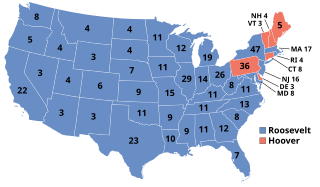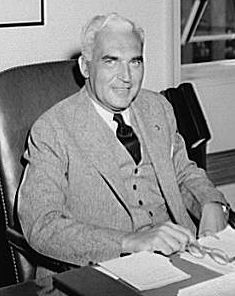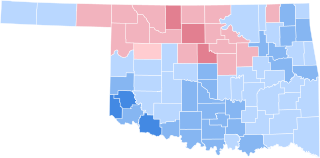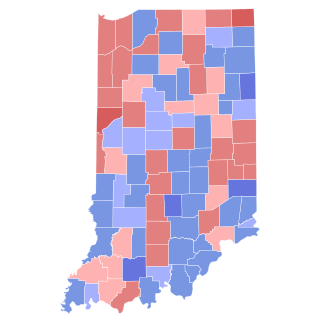
Presidential elections were held in the United States on November 8, 1904. Incumbent Republican President Theodore Roosevelt defeated the conservative Democratic nominee, Alton B. Parker. Roosevelt's victory made him the first president who ascended to the presidency upon the death of his predecessor to win a full term in his own right. This was also the second presidential election in which both major party candidates were registered in the same home state; the others have been in 1860, 1920, 1940, 1944, and 2016.

Presidential elections were held in the United States on November 3, 1908. Republican Party nominee William Howard Taft defeated threetime Democratic nominee William Jennings Bryan. Incumbent President Theodore Roosevelt honored his promise not to seek a third term, and persuaded his close friend, Taft, to become his successor. With Roosevelt's support, Taft won the presidential nomination at the 1908 Republican National Convention on the first ballot. The Democratic Party nominated Bryan, who had been defeated twice previously, in 1896 and 1900, by Republican William McKinley.

Presidential elections were held in the United States on November 5, 1912. Democratic governor Woodrow Wilson of New Jersey unseated incumbent Republican president William Howard Taft while defeating former president Theodore Roosevelt and Socialist Party nominee Eugene V. Debs.

Presidential elections were held in the United States on November 4, 1924. Incumbent Republican President Calvin Coolidge won election to a full term. Coolidge was the second vice president, after Theodore Roosevelt, to ascend to the presidency and then win a full term.

Presidential elections were held in the United States on November 8, 1932. Against the backdrop of the Great Depression, incumbent Republican President Herbert Hoover was defeated in a landslide by Democrat Franklin D. Roosevelt, the governor of New York and the vice presidential nominee of the 1920 presidential election. Roosevelt was the first Democrat in 80 years to simultaneously win an outright majority of the electoral college and popular vote, a feat last accomplished by Franklin Pierce in 1852, as well as the first Democrat in 56 years to win a majority of the popular vote, which was last achieved by Samuel J. Tilden in 1876. Roosevelt was the last sitting governor to be elected president until Bill Clinton in 1992. Hoover became the first incumbent president to lose an election to another term since William Howard Taft in 1912, the last to do so until Gerald Ford lost 44 years later, and the last elected incumbent president to do so until Jimmy Carter lost 48 years later. The election marked the effective end of the Fourth Party System, which had been dominated by Republicans. It was the first time since 1916 that a Democrat was elected president.

Paul Vories McNutt was an American diplomat and politician who served as the 34th governor of Indiana, high commissioner to the Philippines, administrator of the Federal Security Agency, chairman of the War Manpower Commission and ambassador to the Philippines.

Maurice Clifford Townsend was an American politician and the 35th governor of the U.S. state of Indiana from 1937 to 1941. During his term, he led relief efforts during and after the Great Flood of 1937.

Henry Frederick Schricker was an American politician who served as the 36th and 38th Governor of the U.S. state of Indiana from 1941 to 1945 and from 1949 to 1953. He is the only Indiana governor elected to two non-consecutive terms, and the only governor between 1852 and 1977 to be elected to more than one term in office. His terms were marked by strong opposition party control of the Indiana General Assembly, which attempted to remove powers from the governor that had been granted during the Great Depression. Schricker fought the attempt in the state courts, and although his power was significantly reduced, the Indiana Supreme Court ruled in the case of Tucker v. Indiana that the governor was the chief executive of the state, and the legislature could not pass legislation that interfered with the division of powers.

The 1908 United States presidential election in New York took place on November 3, 1908. All 46 contemporary states were part of the 1908 United States presidential election. Voters chose 39 electors to the Electoral College, which selected the president and vice president.

The 1926 United States Senate election in Illinois took place on November 2, 1926.

The 1912 United States presidential election in Oklahoma took place on November 5, 1912, as part of the 1912 United States presidential election. Voters chose ten representatives, or electors, to the Electoral College, who voted for president and vice president.

The 1944 Connecticut gubernatorial election was held on November 7, 1944. It was the third consecutive gubernatorial race between the same two nominees. Incumbent Republican Raymond E. Baldwin defeated Democratic nominee Robert A. Hurley with 50.48% of the vote.

The 1942 Connecticut gubernatorial election was held on November 3, 1942. It was a rematch of the 1940 Connecticut gubernatorial election. Republican nominee Raymond E. Baldwin defeated Democratic incumbent Robert A. Hurley with 48.93% of the vote.

The 1940 Connecticut gubernatorial election was held on November 5, 1940. Democratic nominee Robert A. Hurley defeated incumbent Republican Raymond E. Baldwin with 49.54% of the vote.

The 1938 Connecticut gubernatorial election was held on November 8, 1938. Republican nominee Raymond E. Baldwin defeated Democratic incumbent Wilbur Lucius Cross with 36.43% of the vote.

The 1932 Washington gubernatorial election was held on November 8, 1932. Democratic nominee Clarence D. Martin defeated Republican nominee John Arthur Gellatly with 57.29% of the vote.

The 1940 Indiana gubernatorial election was held on November 5, 1940. Democratic nominee Henry F. Schricker narrowly defeated Republican nominee Glenn R. Hillis with 49.92% of the vote.

The 1936 Indiana gubernatorial election was held on November 3, 1936. Democratic nominee M. Clifford Townsend defeated Republican nominee Raymond S. Springer with 55.36% of the vote.

The 1908 Indiana gubernatorial election was held on November 3, 1908. Democratic nominee Thomas R. Marshall narrowly defeated Republican nominee James Eli Watson with 48.95% of the vote.

The New York City mayoral election of 1933 took place on November 7, 1933, in New York City. Incumbent Democratic Mayor John P. O'Brien, who was elected in a special election after the resignation of Mayor Jimmy Walker, faced Republican Congressman and 1929 mayoral candidate Fiorello La Guardia, and former acting mayor and President of the New York City Board of Aldermen Joseph V. McKee, who became acting mayor after Walker's resignation until the special election, and ran on the Recovery Party line.























